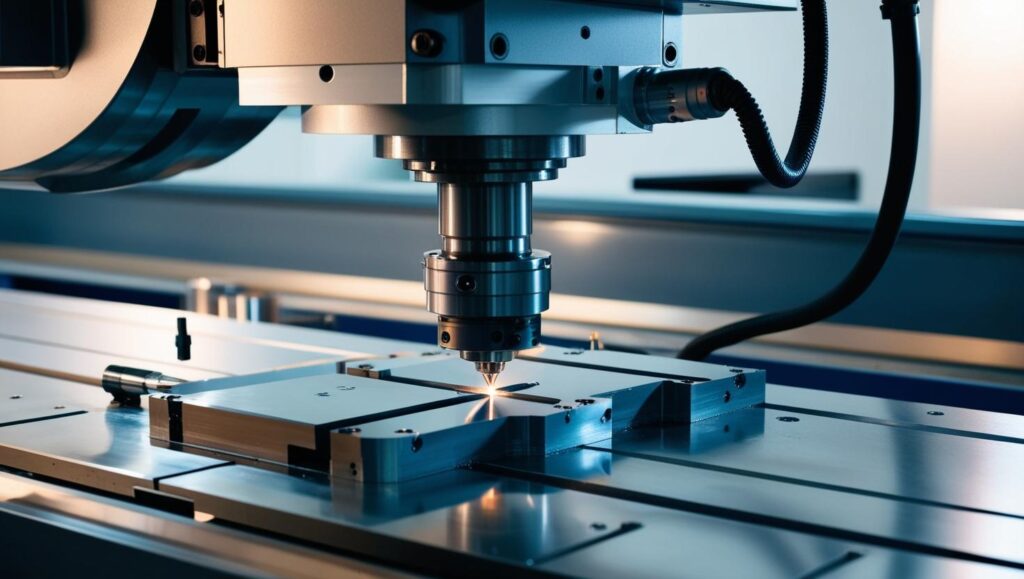CNC milling is a highly precise and efficient machining process widely used in manufacturing. It allows for the automated removal of material from a workpiece using computer-controlled cutting tools. CNC milling is integral to various industries, including aerospace, automotive, medical, and electronics, due to its ability to create complex and high-precision parts.
This guide will explore what CNC milling is, how it works, the different types of CNC milling machines, key components, benefits, applications, and more.
What Is CNC Milling?
CNC milling, short for Computer Numerical Control milling, is a subtractive manufacturing process that uses a computer-controlled milling machine to shape a workpiece. Unlike manual milling, CNC milling operates automatically based on pre-programmed instructions, eliminating human error and increasing production efficiency.
How Does CNC Milling Differ from Other CNC Machining Processes?
CNC milling is just one type of CNC machining. Here’s how it differs from others:
- CNC Turning: Uses a lathe to rotate the workpiece while a cutting tool removes material.
- CNC Drilling: Creates holes using rotating drill bits.
- CNC Grinding: Uses abrasive wheels to smooth surfaces.
- CNC Routing: Similar to milling but primarily used for softer materials like wood and plastic.
How Does CNC Milling Work?
The CNC milling process involves several steps:
1. Designing the Part (CAD)
A Computer-Aided Design (CAD) file is created, defining the exact specifications of the part.
2. Converting the Design to Machine Code (CAM)
The CAD model is converted into G-code, the programming language CNC machines use to execute movements.
3. Machine Setup
The machinist secures the workpiece on the machine table and installs the appropriate cutting tools.
4. Material Removal
The CNC milling machine follows the programmed G-code instructions, using rotary cutting tools to remove material and shape the workpiece.
5. Final Inspection
After milling, the part undergoes quality checks to ensure it meets specifications.
Key Components of a CNC Milling Machine
A CNC milling machine consists of several essential parts:
- Spindle: Rotates the cutting tool at high speeds.
- Worktable: Holds the workpiece securely.
- Axes: Allow movement along X, Y, and Z directions, with advanced machines offering additional rotational axes.
- Controller: Interprets the G-code and commands the machine’s movements.
- Tool Changer: Automatically switches between different cutting tools as needed.
Types of CNC Milling Operations
1. Face Milling
- Cuts a flat surface perpendicular to the spindle.
- Used for finishing surfaces.
2. Peripheral Milling (Plain Milling)
- Cuts along the periphery of the workpiece.
- Used for creating slots and contours.
3. Angular Milling
- The cutting tool is set at an angle to create chamfers, grooves, and serrations.
4. Form Milling
- Uses custom-shaped cutting tools to produce curved or complex shapes.
5. Thread Milling
- Creates precise internal and external threads.
6. High-Speed Milling
- Uses high spindle speeds for faster production and finer surface finishes.
Materials Used in CNC Milling
Metals
- Aluminium: Lightweight, corrosion-resistant.
- Stainless Steel: Strong and durable.
- Brass: Excellent for electrical and decorative applications.
- Titanium: High strength-to-weight ratio, used in aerospace.
Plastics
- ABS: Durable and impact-resistant.
- Nylon: Flexible and wear-resistant.
- PEEK: High-performance thermoplastic for medical and aerospace.
How Much Does CNC Milling Cost?
The cost of CNC milling depends on:
- Material Type – Metals are generally more expensive than plastics.
- Complexity of the Design – More intricate designs require longer machining times.
- Machine Type – 5-axis machines are more expensive than 3-axis machines.
- Production Volume – Higher quantities can reduce per-unit costs.
For custom quotes, manufacturers usually provide pricing based on part specifications and production volume.
Choosing the Right CNC Milling Service
When selecting a CNC milling provider, consider:
- Experience: Look for companies with a proven track record.
- Capabilities: Ensure they offer the right machines and techniques for your project.
- Quality Control: Verify their commitment to precision and consistency.
- Turnaround Time: Confirm they can meet your production deadlines.
For innovative, precision-engineered solutions with top-quality manufacturing procedures, Aeron Automation is an excellent choice. Get in touch today to learn how they can support your next project.
Conclusion
CNC milling is a cornerstone of modern manufacturing, enabling high-precision, high-volume production across various industries. With advancements in automation and multi-axis machining, CNC milling continues to evolve, making it an essential process for industries demanding accuracy and efficiency.
If you’re looking for CNC milling services, ensure you work with experienced manufacturers to get the best precision, quality, and cost-effectiveness for your project.
